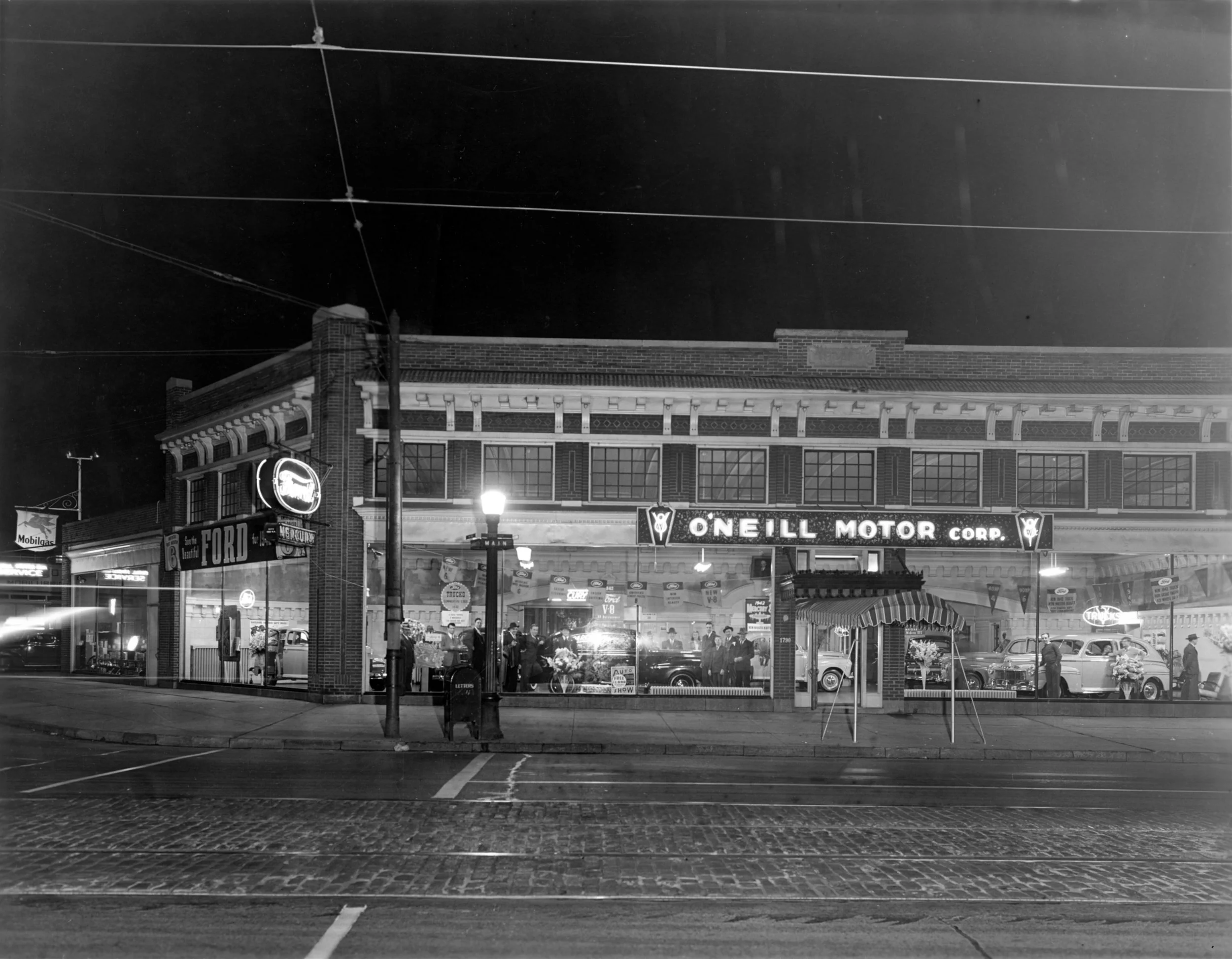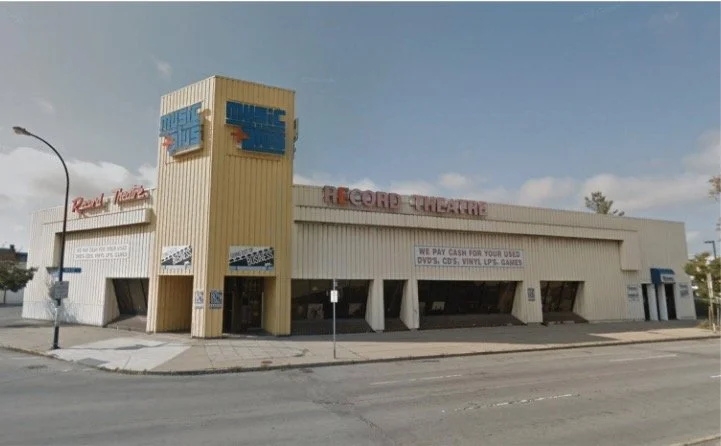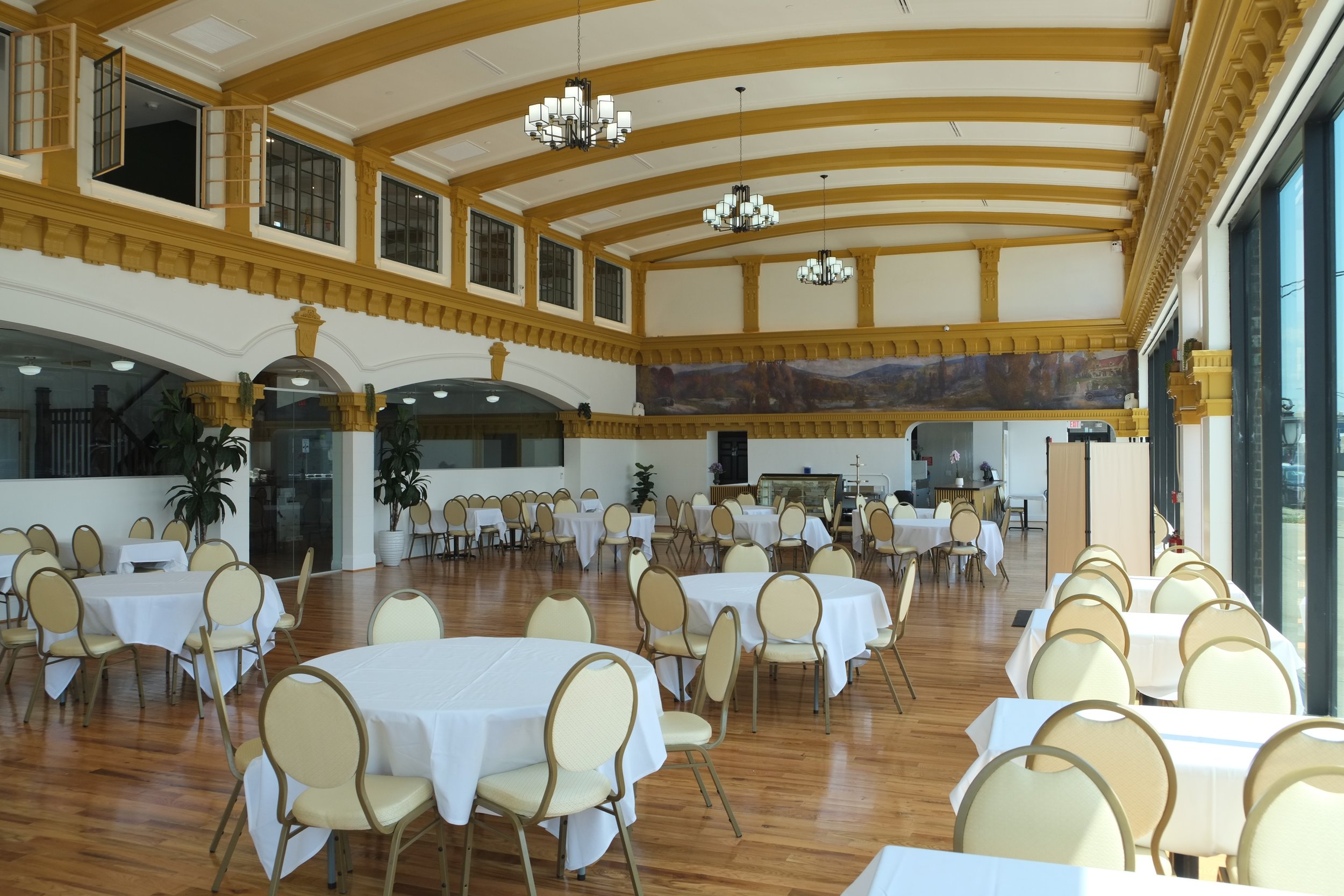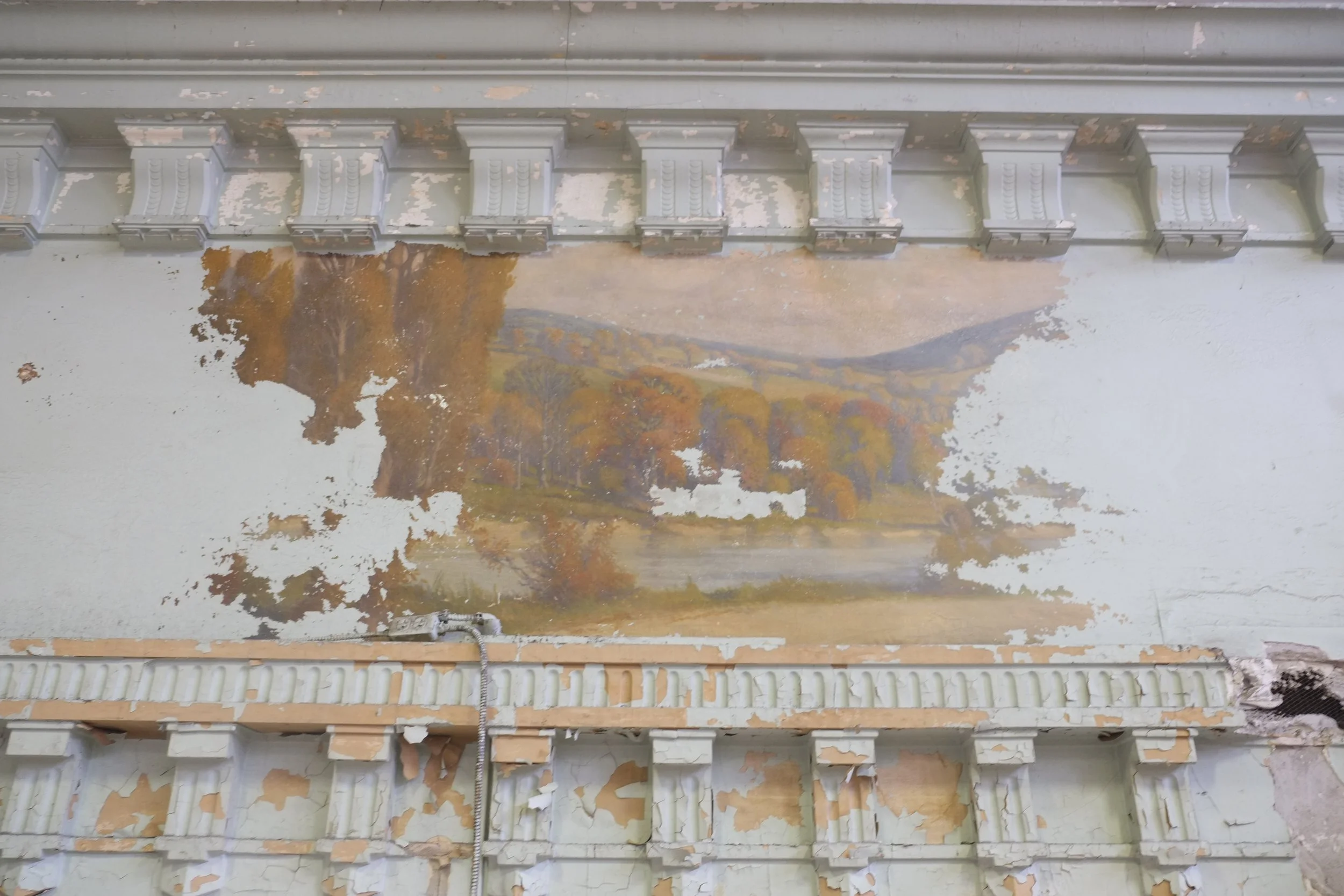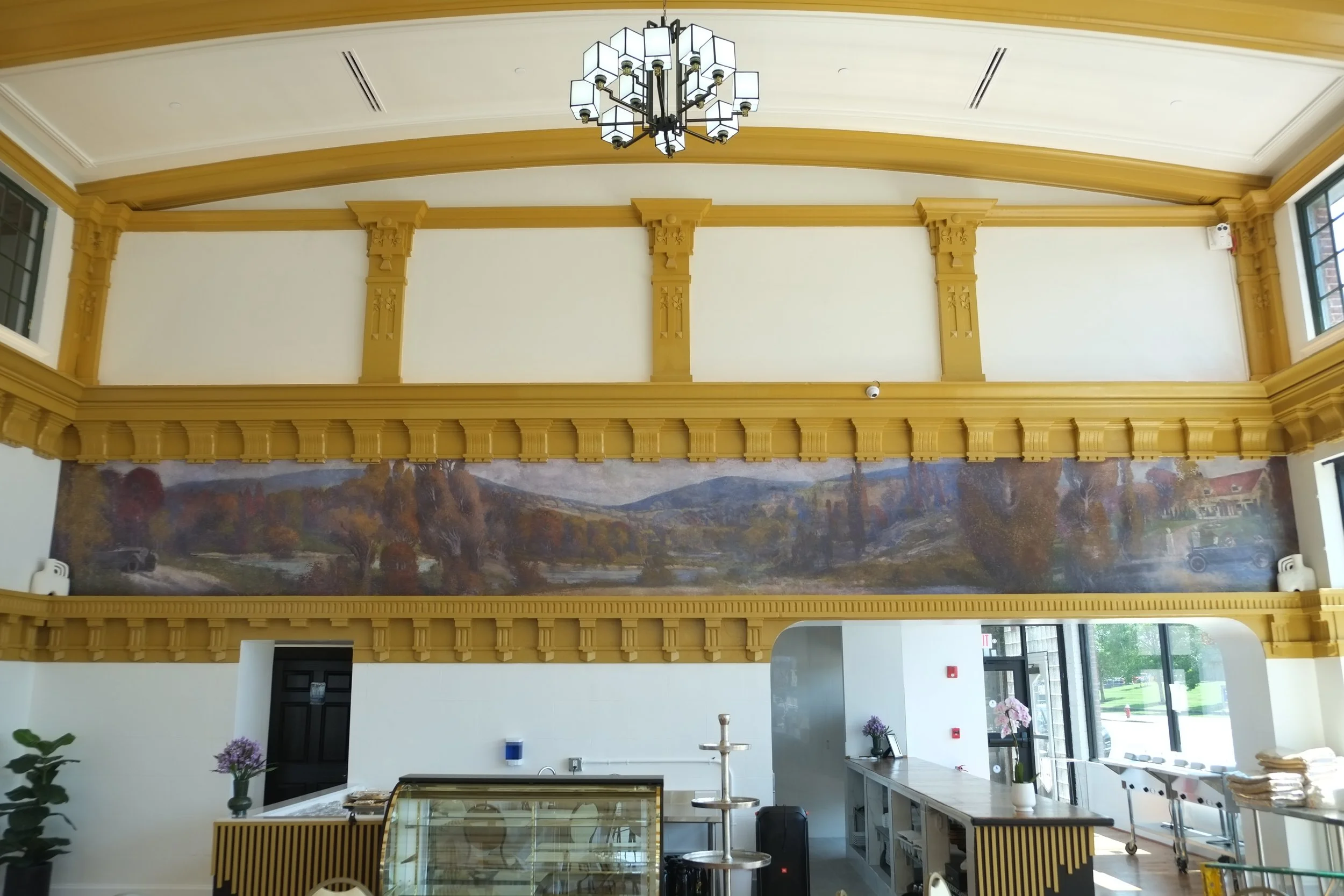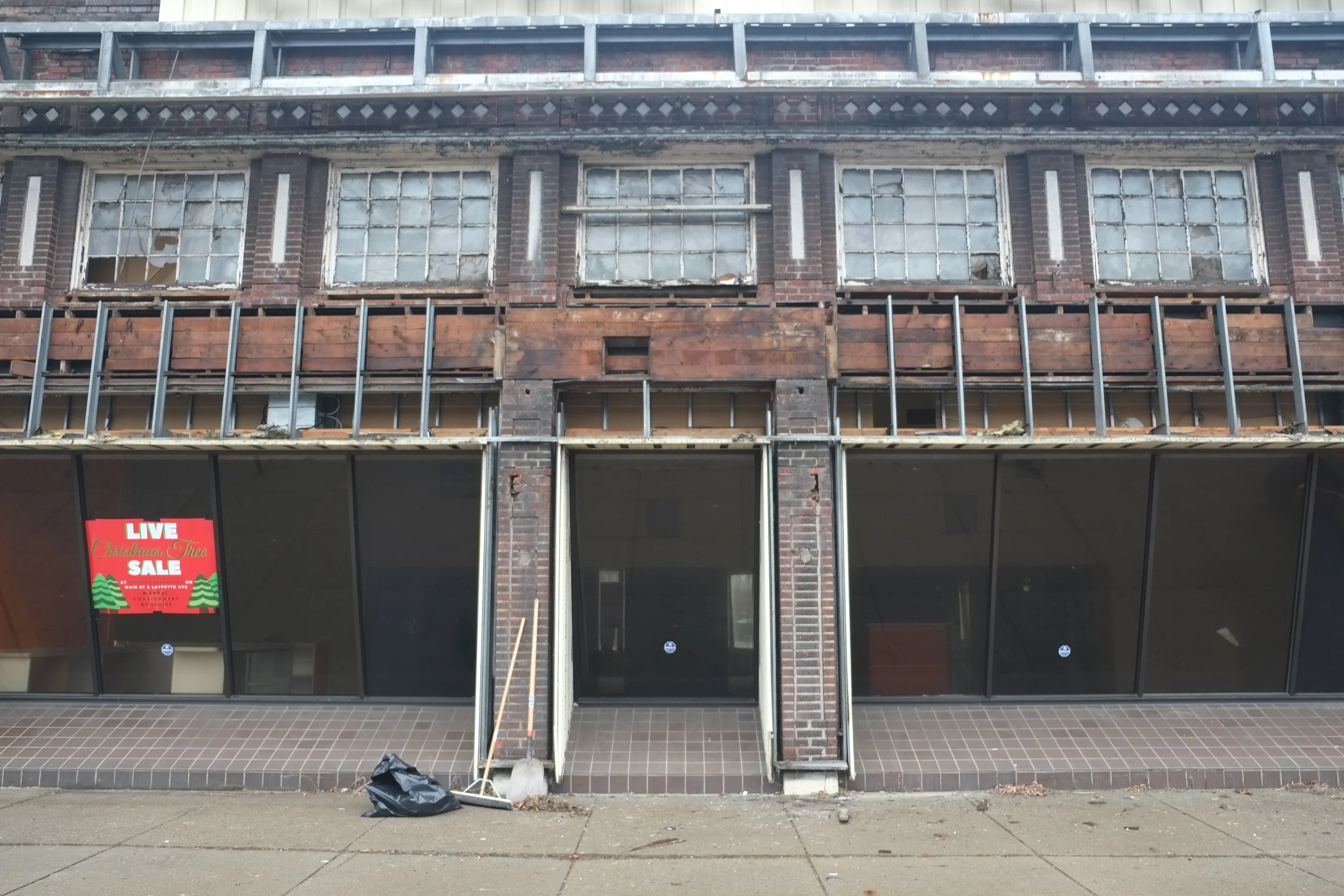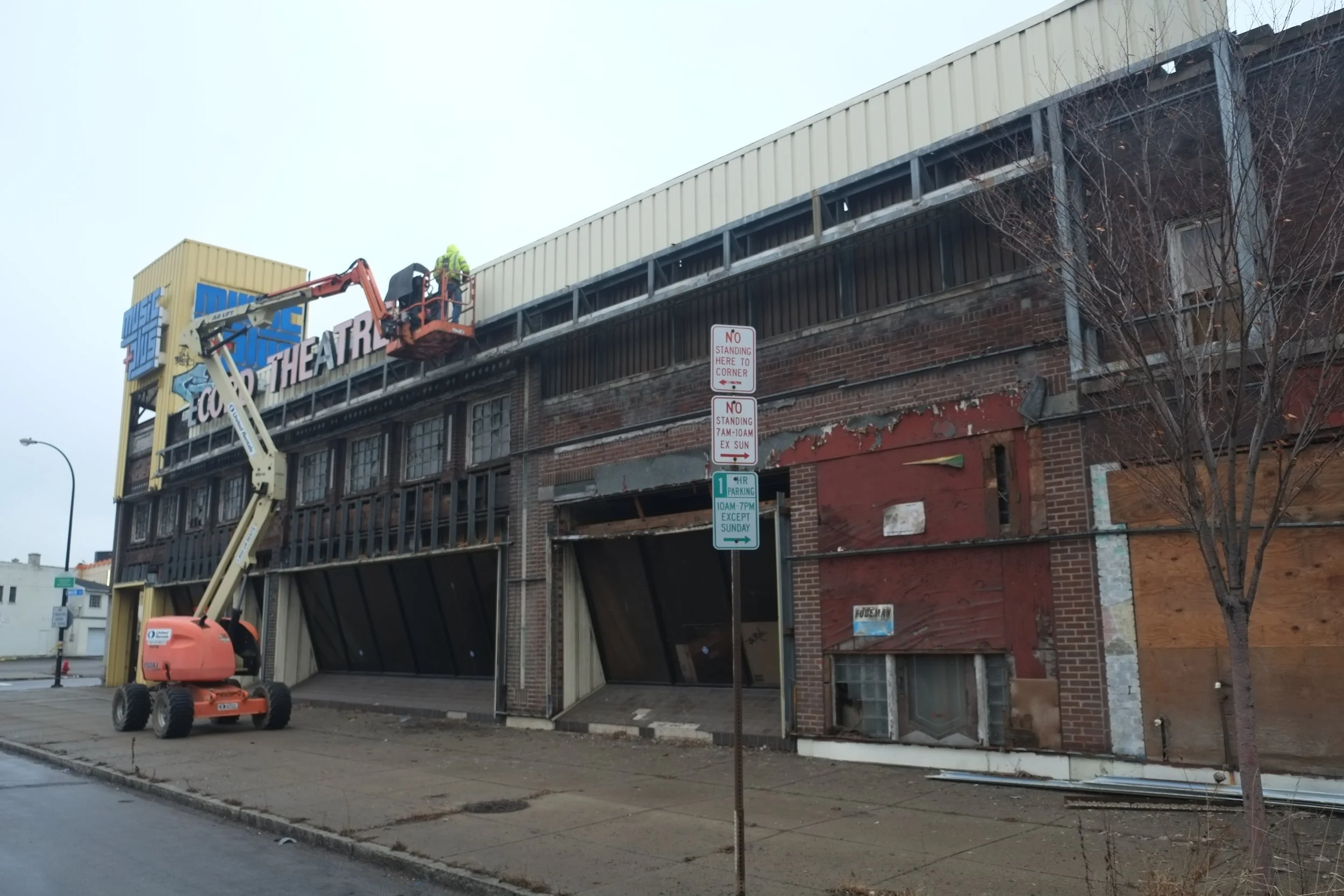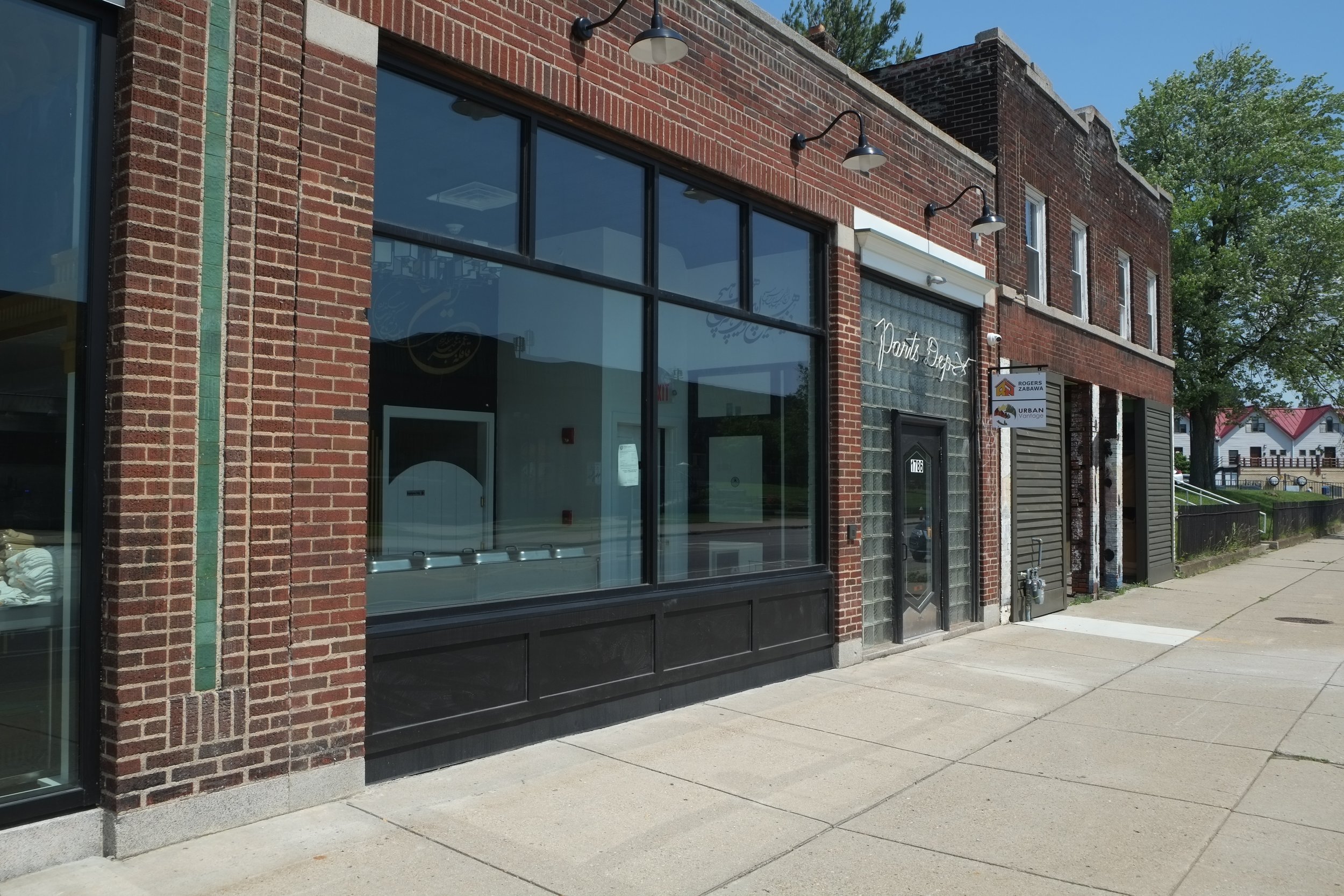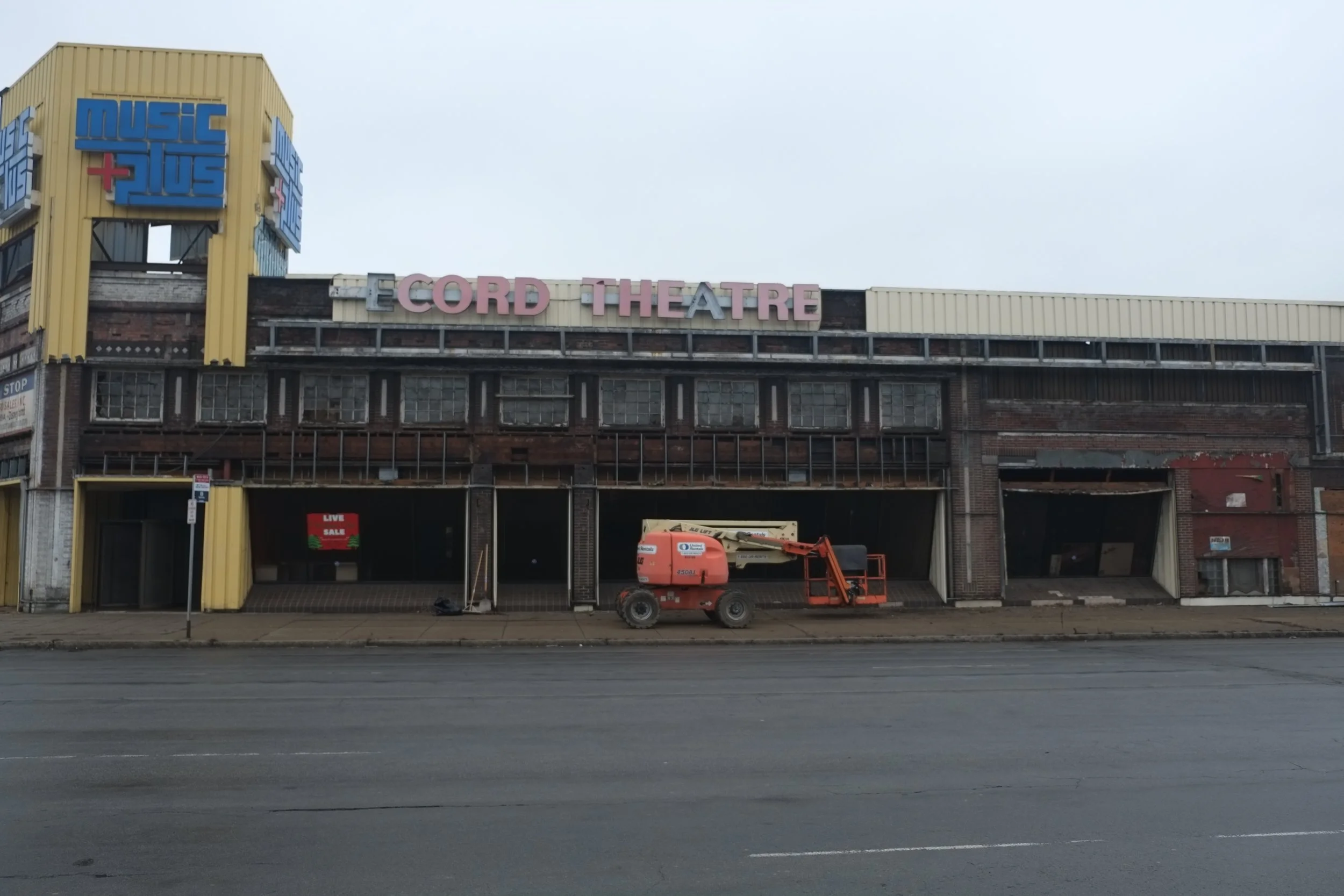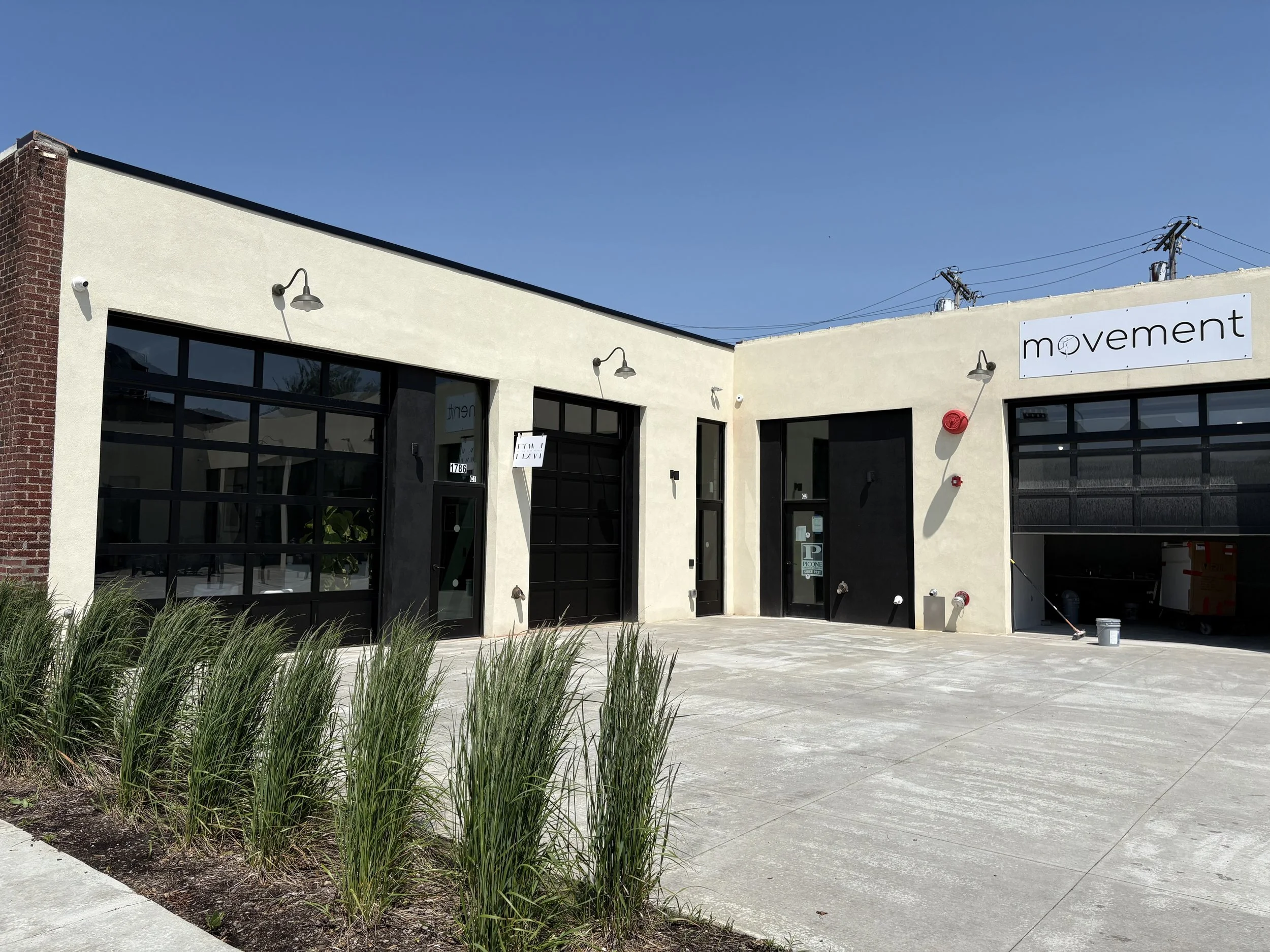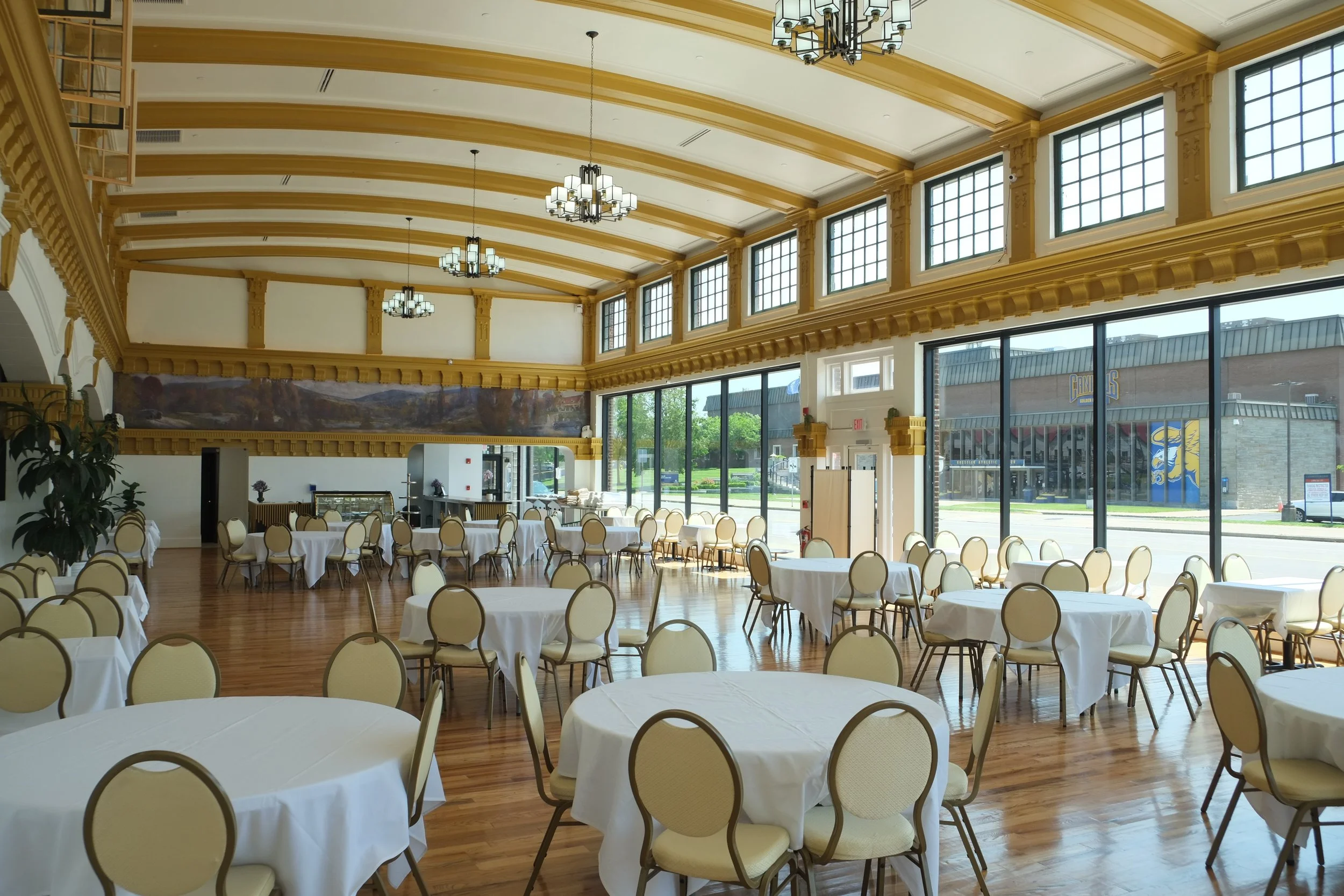Excellence Award Spotlight: The Monroe
“We are thrilled and humbled to receive this prestigious award for our project at the Monroe Building,” said Michael Puma of Preservation Studios. “As a historic preservation consultant and co-developer of the rehabilitation, this is just about the highest honor of recognition I could imagine for our collective work here.”
l-r: historic black-and-white photo of the Monroe building when it was the O’Neill Motor Corp., with the first floor used as a car showroom; the building as it looked when it was the Record Theatre; the restored Monroe.
This $8.4 million rehabilitation project converted the former Record Theatre complex into 17 affordable apartments plus over 10,000 square feet of commercial/retail space. The rehabilitation of The Monroe building is a shining example of how adaptative reuse through historic preservation can catalyze the resurgence of surrounding neighborhoods. It also shows that affordable housing can be as well-located and well-appointed as market-rate housing – its location on Main Street brings much-needed affordable housing to the center of the city. The building’s history and original appearance had been hidden for more than 40 years and was under threat of demolition before it was transformed back to its 1920 glory by the development team.
Before-and-after images of the Monroe Building.
New York State Homes and Community Renewal Commissioner RuthAnne Visnauskas said, “Under Governor Hochul’s leadership, New York has focused on preservation – and become a nationwide leader in rehabilitating landmark buildings, while also focusing on the Governor’s $25 billion plan to create and preserve 100,000 affordable housing units across the state. HCR is pleased the Preservation League of New York State is recognizing The Monroe with the 2025 Excellence in Historic Preservation Award, a project supported with $850,000 in HCR’s Small Building Participation Loan Program to turn the iconic Record Theatre into a place where people can live and businesses can thrive. Thank you to the Preservation League for being a valuable ally and to all our partners for investing in housing and in Buffalo’s rich history.”
Project team: Michael Puma and Derek King of Preservation Studios; Rich Rogers and Travis Gordon of Urban Vantage LLC; and Jason Yots of Common Bond Real Estate. These three groups have a long professional history of working together in historic preservation, real estate development, and law – all culminating in the rehabilitation of the Monroe Building. Each of the firms played an individual role in their respective fields and all members worked together as co-developers to see the project through.
Empire State Development President, CEO & Commissioner Hope Knight said, “The Preservation League of NYS’s recognition of The Monroe affirms the vital link between preservation, resiliency, and equitable development. Under Governor Hochul’s leadership, a strong partnership of developers, members of this community, and the state has transformed this historic building with new commercial space and affordable apartments, bringing renewed purpose and opportunity to Main Street.”
Renovated interior spaces at the Monroe. The building is now home to 17 apartments and 10,000 square feet of commercial space.
New York State Office of Parks, Recreation and Historic Preservation helped facilitate the use of Federal and State Historic Rehabilitation Tax Credits, which are estimated to provide $2 million in equity. Other state financing includes an $850,000 Small Building Participation Loan Program loan from NYS Homes and Community Renewal, which supports the preservation and improvement or new construction of rental properties in buildings of five to 50 units located outside of New York City. Empire State Development provided a $750,000 loan through the Better Buffalo Fund. The restoration of the Monroe was also made possible with construction and permanent financing through the Community Preservation Corporation, as well as through the participation by Chase Community Equity, the project’s historic tax credit investor.

